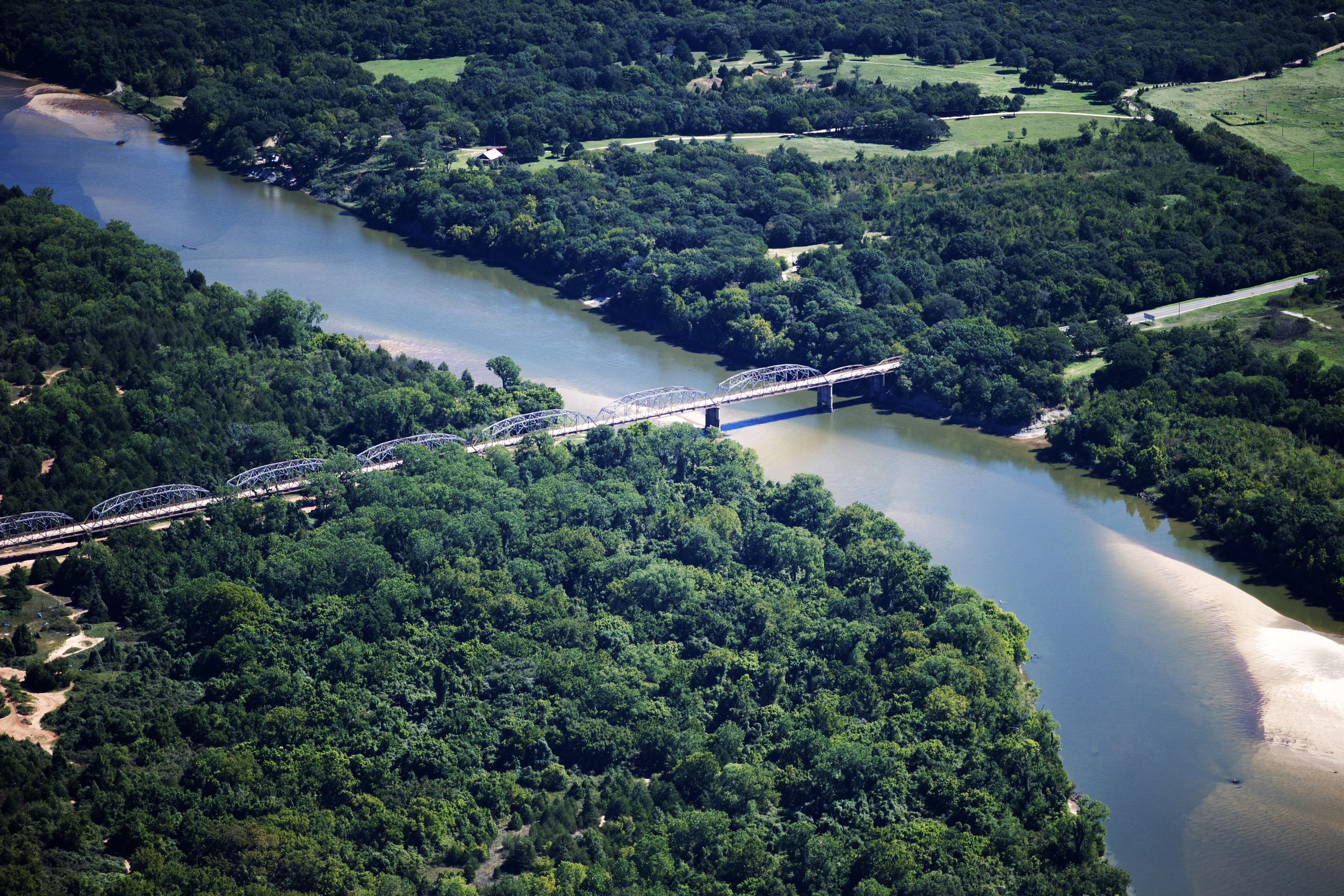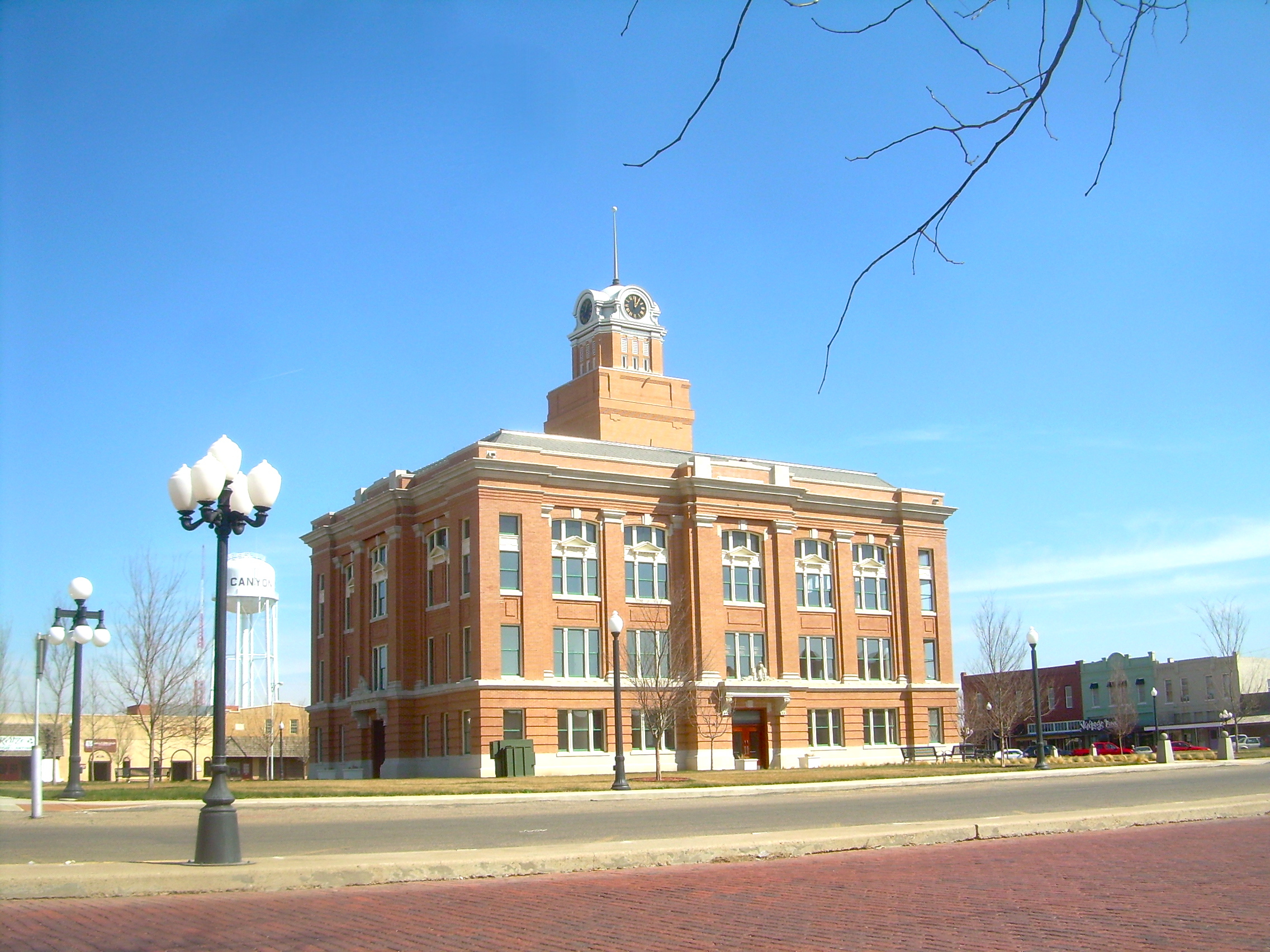|
Great Western Cattle Trail
The Great Western Cattle Trail was used during the late 19th century for movement of cattle and horses to markets in eastern and northern states. It is also known as the Western Trail, Fort Griffin Trail, Dodge City Trail, Northern Trail and Texas Trail. It replaced the Chisholm trail when that closed. While it wasn't as well known, it was greater in length, reaching railheads up in Kansas and Nebraska and carried longhorns and horses to stock open-range ranches in the Dakotas, Wyoming, Montana, and two provinces in Canada. It took almost one hundred days to reach their destination. The Great Western Trail ran south of and roughly parallel to the Chisholm Trail into Kansas. The cattle were taken to towns located on major railroads and delivered north to establish ranches. Although rail lines were built in Texas, the cattle drives north continued because Texas rail prices made it more profitable to trail them north. History The Great Western Cattle Trail was first traveled by C ... [...More Info...] [...Related Items...] OR: [Wikipedia] [Google] [Baidu] |
Altus, Oklahoma
Altus () is a city in and the county seat of Jackson County, Oklahoma, United States. The population was 19,813 at the 2010 census, a loss of 7.7 percent compared to 21,454 in 2000. Altus is home to Altus Air Force Base, the United States Air Force training base for C-17, KC-46 and KC-135 aircrews. It is also home to Western Oklahoma State College and Southwest Technology Center. History The town that would later be named Altus was founded in 1886.Altus Oklahoma State University County Extension Service (accessed May 10, 2010) The community was originally called "Frazer", a settlement of about 50 people on Bitter Creek that served as a trading post on the [...More Info...] [...Related Items...] OR: [Wikipedia] [Google] [Baidu] |
University Of Oklahoma Press
The University of Oklahoma Press (OU Press) is the publishing arm of the University of Oklahoma. Founded in 1929 by the fifth president of the University of Oklahoma, William Bennett Bizzell, it was the first university press to be established in the American Southwest. The OU Press is one of the leading presses in the region, and is primarily known for its titles on the American West The Western United States (also called the American West, the Far West, and the West) is the region comprising the westernmost states of the United States. As American settlement in the U.S. expanded westward, the meaning of the term ''the Wes ... and Native Americans, though the press publishes texts on other subjects as well, ranging from wildlife to ancient languages.Oklahoma Historical Society's Encyclopaedia of Oklahoma History and Culture Tornadoes and severe weather are another focus. The press releases around 80 books every year. A profile of the University of Oklahoma Press from ... [...More Info...] [...Related Items...] OR: [Wikipedia] [Google] [Baidu] |
Norman, Oklahoma
Norman () is the third-largest city in the U.S. state of Oklahoma, with a population of 128,097 as of 2021. It is the largest city and the county seat of Cleveland County, Oklahoma, Cleveland County, and the second-largest city in the Oklahoma City metropolitan area, behind the state capital, Oklahoma City. It is 20 miles (32 kilometers) south of OKC, OK, OKC. Norman was settled during the Land Run of 1889, which opened the former Unassigned Lands of Indian Territory to American pioneer settlement. The city was named in honor of Abner Norman, the area's initial land surveyor, and was formally incorporated on , 1891. Norman has prominent higher education and related research industries, as it is home to the University of Oklahoma, the largest university in the state, with nearly 32,000 students. The university is well known for its sporting events by teams under the banner of the nickname Oklahoma Sooners, "Sooners," with over 85,000 people routinely attending American football, f ... [...More Info...] [...Related Items...] OR: [Wikipedia] [Google] [Baidu] |
Postmaster
A postmaster is the head of an individual post office, responsible for all postal activities in a specific post office. When a postmaster is responsible for an entire mail distribution organization (usually sponsored by a national government), the title of Postmaster General is commonly used. Responsibilities of a postmaster typically include management of a centralized mail distribution facility, establishment of letter carrier routes, supervision of letter carriers and clerks, and enforcement of the organization's rules and procedures. The postmaster is the representative of the Postmaster General in that post office. In Canada, many early places are named after the first postmaster. History In the days of horse-drawn carriages, a postmaster was an individual from whom horses and/or riders (known as postilions or "post-boys") could be hired. The postmaster would reside in a "post house". The first Postmaster General of the United States was the notable founding fathe ... [...More Info...] [...Related Items...] OR: [Wikipedia] [Google] [Baidu] |
Red River Of The South
The Red River, or sometimes the Red River of the South, is a major river in the Southern United States. It was named for its reddish water color from passing through red-bed country in its watershed. It is one of several rivers with that name. Although once a tributary of the Mississippi River, the Red River is now a tributary of the Atchafalaya River, a distributary of the Mississippi that flows separately into the Gulf of Mexico. This confluence is connected to the Mississippi River by the Old River Control Structure. The south bank of the Red River formed part of the US–Mexico border from the Adams–Onís Treaty (in force 1821) until the Texas Annexation and the Treaty of Guadalupe Hidalgo. The Red River is the second-largest river basin in the southern Great Plains. It rises in two branches in the Texas Panhandle and flows east, where it serves as the border between the states of Texas and Oklahoma. It forms a short border between Texas and Arkansas before enteri ... [...More Info...] [...Related Items...] OR: [Wikipedia] [Google] [Baidu] |
Canyon, Texas
Canyon is a city in, and the county seat of, Randall County, Texas, United States. The population was 14,836 at the 2020 census. It is part of the Amarillo, Texas, metropolitan statistical area. Canyon is the home of West Texas A&M University and Panhandle–Plains Historical Museum, and the outdoor musical drama ''Texas''. History Canyon was founded by L.G. Conner. The JA Ranch is east of Canyon. An historic landmarked 47-foot tall statue of a cowboy, constructed in 1959, stands next to U.S. Route 60 in Canyon. Geography According to the United States Census Bureau, Canyon has a total area of , all land. The city itself lies in a valley that eventually becomes Palo Duro Canyon to the east. Climate Demographics 2020 census As of the 2020 United States census, there were 14,836 people, 5,189 households, and 3,444 families residing in the city. 2010 census At the 2010 census, 13,303 people, 5,185 households and 2,924 families resided in the city. The population de ... [...More Info...] [...Related Items...] OR: [Wikipedia] [Google] [Baidu] |
Curator
A curator (from la, cura, meaning "to take care") is a manager or overseer. When working with cultural organizations, a curator is typically a "collections curator" or an "exhibitions curator", and has multifaceted tasks dependent on the particular institution and its mission. In recent years the role of curator has evolved alongside the changing role of museums, and the term "curator" may designate the head of any given division. More recently, new kinds of curators have started to emerge: "community curators", "literary curators", " digital curators" and " biocurators". Collections curator A "collections curator", a "museum curator" or a "keeper" of a cultural heritage institution (e.g., gallery, museum, library or archive) is a content specialist charged with an institution's collections and involved with the interpretation of heritage material including historical artifacts. A collections curator's concern necessarily involves tangible objects of some sort—artwork, ... [...More Info...] [...Related Items...] OR: [Wikipedia] [Google] [Baidu] |
Harold Dow Bugbee
Harold Dow Bugbee (August 15, 1900 – March 27, 1963) was an American Western artist, illustrator, painter, and curator of the Panhandle-Plains Historical Museum in Canyon, Texas.Bugbee exhibit, Panhandle-Plains Historical Museum, Canyon, Texas Bugbee sought with considerable success to become the dominant artist of the Texas South Plains, as his role model, Charles M. Russell of Montana, accordingly sketched life of the northern Great Plains. Early years and education Bugbee was born in Lexington, Massachusetts, to Charles H. Bugbee and the former Grace L. Dow. In 1914, the family moved to the Texas Panhandle at the suggestion of a cousin, cattleman T.S. Bugbee, and established a ranch near Clarendon, the seat of Donley County east of Amarillo. As a youth, Bugbee began sketching the multiple facets of ranch life hoping to preserve for posterity a rapidly vanishing way of life. His own experiences offered keen insight into ranch living in the Panhandle. Bugbee graduat ... [...More Info...] [...Related Items...] OR: [Wikipedia] [Google] [Baidu] |
T-shirt
A T-shirt (also spelled tee shirt), or tee, is a style of fabric shirt named after the T shape of its body and sleeves. Traditionally, it has short sleeves and a round neckline, known as a '' crew neck'', which lacks a collar. T-shirts are generally made of a stretchy, light, and inexpensive fabric and are easy to clean. The T-shirt evolved from undergarments used in the 19th century and, in the mid-20th century, transitioned from undergarment to general-use casual clothing. They are typically made of cotton textile in a stockinette or jersey knit, which has a distinctively pliable texture compared to shirts made of woven cloth. Some modern versions have a body made from a continuously knitted tube, produced on a circular knitting machine, such that the torso has no side seams. The manufacture of T-shirts has become highly automated and may include cutting fabric with a laser or a water jet. T-shirts are inexpensive to produce and are often part of fast fashion, leading to o ... [...More Info...] [...Related Items...] OR: [Wikipedia] [Google] [Baidu] |
Barbecue
Barbecue or barbeque (informally BBQ in the UK, US, and Canada, barbie in Australia and braai in South Africa) is a term used with significant regional and national variations to describe various cooking methods that use live fire and smoke to cook the food. The term is also generally applied to the devices associated with those methods, the broader cuisines that these methods produce, and the meals or gatherings at which this style of food is cooked and served. The cooking methods associated with barbecuing vary significantly but most involve outdoor cooking. The various regional variations of barbecue can be broadly categorized into those methods which use direct and those which use indirect heating. Indirect barbecues are associated with North American cuisine, in which meat is heated by roasting or smoking over wood or charcoal. These methods of barbecue involve cooking using smoke at low temperatures and long cooking times, for several hours. Elsewhere, barbecuing mo ... [...More Info...] [...Related Items...] OR: [Wikipedia] [Google] [Baidu] |




.jpg)

